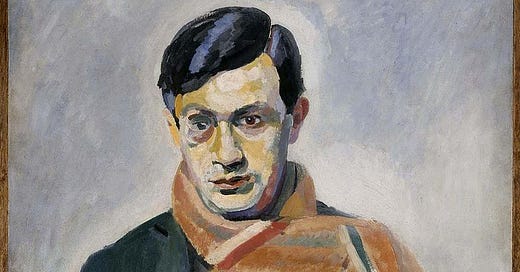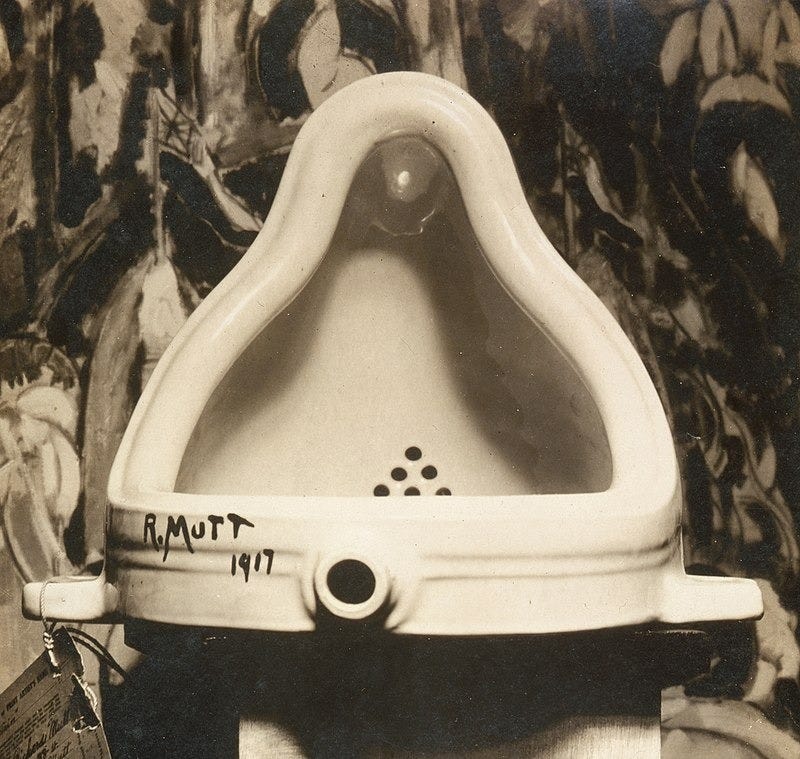“I am neither for nor against and I do not explain because I hate common sense.”, said Tristan Tzara in his Dada Manifesto of 1918 proposing a new art order of nothingness and an order resembling a dying world. Tzara was one of the presidents of the Dada movement.
Now, I do not intend to introduce Dada. Not the word, at least, by any means. Tzara coined the need to achieve the knowledge of Dada’s meaning as bacteriological for the word, in every literal sense, means different and thereby means nothing.
Dada was a groundbreaking art movement in the early twentieth century that was not only anti-establishment and anti-bourgeois, but also anti-art. Dada, in essence, distilled anti-war feelings driven by a lack of faith, a worn-out morale, and a lack of hope for rebirth.
The movement aimed to question all popular modern ideas relating to the widespread aesthetic emotion about art. To shape Dadaism, the participants used the concepts of gibberish nonsense, unpredictability, and complete disorder.
The criers of Dada negated the widespread meaning of beauty. To them, the need to emphasize the existence of an underlying common objectivity of beauty in art was a resplendent falsehood. They critiqued criticism and knew it as unworthy of meaning or any use.
“A work of art should not be beauty in itself, for beauty is dead; it should be neither gay nor sad, neither light nor dark to rejoice or torture the individual by serving him the cakes of sacred aureoles or the sweets of a vaulted race through the atmospheres. A work of art is never beautiful by decree, objectively and for all.”, said Tzara.
Those in Dada believed that art was not beautiful and it was never meant to be. Literature was not important either. It affected nobody but its executor, the writer. Art, to them, was a private affair, which the artist produced for himself. There exists a famous Dada artwork from Marcel Duchamp from 1917 called “Fountain”. Here’s an image:
The above is but a china urinal signed “R. Mutt 1917”. That... is art? Yes, it is. Consider this. What gives any creation its purpose and clarity as art? The creator's will, not the beauty of the work, is what makes it so. The creator, the artist of art, causes the work to exist and declares it as art. Dada believed that art could never be universally understood or perceived in a common sense. It was lengthy and personal.
Art becomes art not because it is beautiful, but because we choose to recognize it as such. What we choose to regard as art may be art. Art does not have to be a product of ability; it can just be a notion of being and observation of the current milieu.
Tristan Tzara once wrote a guidance on how to write a Dadaist poem. His way was:
“To make a Dadaist poem:
Take a newspaper.
Take a pair of scissors.
Choose an article as long as you are planning to make your poem.
Cut out the article.
Then cut out each of the words that make up this article and put them in a bag.
Shake it gently.
Then take out the scraps one after the other in the order in which they left the bag.
Copy conscientiously.
The poem will be like you.
And here are you a writer, infinitely original and endowed with a sensibility that is charming though beyond the understanding of the vulgar.”
Dadaism, then, is not a poetry. It has no existence either. It's a facade with no front. It is an ultimate rejection of all existent subjectivity and a withdrawal from anything bizarre, to the point where it uses nonsense to refute what doesn't make sense other than lovely pretense.
Dada is unaware of the existence of God. I wouldn't say it doesn't believe in God, but it doesn't see the necessity for one. It also doesn't see the necessity for a purpose. Dada corruption creates freedom of thought and washes away the disorganized.
The movement of Dada is dumb, says the idea of Dada.
“What good did the theories of the philosophers do us? Did they help us to take a single step forward or backward? What is forward, what is backward? Did they alter our forms of contentment? We are. We argue, we dispute, we get excited. The rest is sauce. Sometimes pleasant, sometimes mixed with a limitless boredom, a swamp dotted with tufts of dying shrubs.”
Dada pushed for spontaneity rather than order, technique, or procedure. Not because of its apparent beauty, but because it is maybe the most humane thing ever. Something that emerges from the skin unexpectedly is the genuine expression of all things human. To think an idea through, develop it, polish it, or make it presentable is a farce that Dada sought to disprove. It romanticized the ready-made while eliminating the excessive.
And Dada lives on. The “absurd” art-piece of the duct taped banana wouldn’t be art without Dada. The “illogical” performative art sessions wouldn’t be so illogical without Dada. And Dada will live on. Dada is all human, nothing artificial, nothing logical, all raw.
Ladies and gentlemen, that, as we call it, is The Archaic Allegory's sign-off.





I just might have converted.
Dada artists: the original gen z